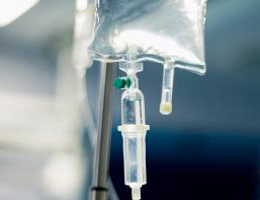In diabetic patients, the body is either unable to produce insulin (a hormone produced in the pancreas that is normally secreted when glucose levels are high) at all (Type I) or unable to produce enough insulin (Type II) to regulate blood glucose levels. High blood sugar levels can lead to a variety of symptoms (e.g., weakness) in the short-term, and serious consequences such as heart attack, stroke or other consequences of diabetes in the long-term.
Diabetics prick their finger to check blood sugar levels and add insulin when necessary, usually through injections.
But now a single dose of smart insulin, a chemically modified version of regular, long-acting insulin, would keep circulating in the body and turn on when needed. The technology worked in mice and scientists now plan to move to human trials soon, Proceedings of the National Academy of Sciences journal reports.
 “This is an important advance in insulin therapy,” reports lead study author Danny Chou. The University of Utah assistant professor of biochemistry and USTAR investigator continues, “Our insulin derivative appears to control blood sugar better than anything that is available to diabetes patients right now.”
“This is an important advance in insulin therapy,” reports lead study author Danny Chou. The University of Utah assistant professor of biochemistry and USTAR investigator continues, “Our insulin derivative appears to control blood sugar better than anything that is available to diabetes patients right now.”
It has an extra set of molecules stuck on the end that binds it to proteins that circulate in the bloodstream. While it is attached to these, the smart insulin is in its switched off mode.When blood sugar rises, the smart insulin switches on – glucose locks on to the smart insulin and tells it to get to work.
Lead study co-author Matthew Weber adds, “At present, there is no clinically approved glucose-responsive modified insulin.” Weber performed the primary functions of this work with co-authors Chou (above) and Benjamin Tang along with MIT professors Robert Langer and Daniel Anderson. He continues, “The development of such an approach could contribute to greater therapeutic autonomy for diabetic patients.”
Animal trials are still in full swing, with any clinical trials 2 to 5 years out and experts caution that it will be years before treatments could become a reality for patients.


